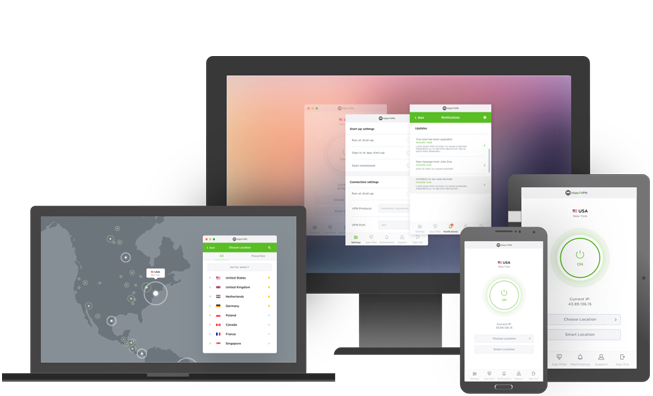What is Traffic Shaping?


Traffic shaping is a method of bandwidth management that slows down or speeds up specific types of data. It is used to improve the performance of a network by prioritizing certain types of traffic. For example, if you are streaming a movie on Netflix, you may want to prioritize that traffic over someone browsing the web.
Table of contents
What is Traffic Shaping?
Traffic shaping is the process of allocating network resources in order to ensure that traffic flows smoothly and efficiently. It can be used to prevent network congestion and optimize performance by prioritizing certain types of traffic. Traffic shaping can be implemented in both hardware and software, and is often used in conjunction with Quality of Service (QoS) policies.
How does Traffic Shaping Work?
Traffic shaping is a process of monitoring and managing network traffic in order to optimize performance and reduce congestion. Traffic shaping can be used to improve the overall quality of service (QoS) on a network.
Traffic shaping works by regulating the amount of data that is allowed to be sent or received over a network connection. This process is typically accomplished by setting limits on the bandwidth and/or burst rate for a particular connection. By doing this, traffic shaping can help to ensure that mission-critical applications have the resources they need to function properly, while also preventing lower-priority traffic from bogging down the network.
One of the benefits of traffic shaping is that it can help to prevent network congestion before it happens. By managing traffic levels in this way, it is possible to keep the flow of data moving smoothly, even during peak usage periods. This can result in a better overall experience for users, as well as reduced stress on the network itself.
Another advantage of traffic shaping is that it can be used to prioritize certain types of traffic over others. For example, if you have a VoIP application that requires low latency, you could use traffic shaping to give it priority over other types of traffic
The Benefits of Traffic Shaping
Traffic shaping can be an extremely beneficial tool for managing internet traffic.
By regulating the amount of data that is allowed to be sent or received at any given time, traffic shaping can help to reduce congestion and improve overall network performance. Additionally, traffic shaping can be used to prioritize certain types of traffic, such as time-sensitive data or mission-critical applications.
The Downsides of Traffic Shaping
Traffic shaping can have some negative consequences. If not configured properly, it can cause packet loss and latency issues. It can also make it difficult to troubleshoot network problems since it can obscure the root cause of the issue. In some cases, traffic shaping can even make a network slower.
How to Shape Your Traffic

If you're like most people, you probably have a love-hate relationship with traffic. On one hand, it's great to be able to get around quickly and easily. On the other hand, traffic can be a huge pain, especially when it's congested.
One way to help ease the pain of traffic is to shape your traffic. Traffic shaping is a technique that helps manage network congestion by regulating the amount of data that flows into and out of a network. It does this by prioritizing certain types of traffic over others.
For example, if you're working on a time-sensitive project, you may want to prioritize your own traffic over general browsing traffic. This way, your project won't be impacted by slowdowns caused by other users on the network.
Traffic shaping can be done manually or through software that automatically manages priorities. If you're interested in trying it out, there are a few things you need to keep in mind. First, make sure your router supports traffic shaping. Second, identify which types of traffic are most important to you and give them priority accordingly.
With a little bit of effort, traffic shaping can help make your life a little bit easier.
Shaping Inside the Tunnel
Prioritization of the traffic inside the tunnel is necessary if it carries multiple classes of traffic. The VPN needs to be designated as its own interface in the GUI in order for the wizard to take the traffic into account in this manner.
This can be done by assigning it as explained in Interface assignment and configuration, using the shaper wizard as if it were a different WAN interface, and classifying the traffic as usual.
Shaping Outside the tunnel (passtos)
The passtos option in OpenVPN, also known as Type-of-Service in the OpenVPN client or server options, is another option to take into account if controlling VoIP traffic across a VPN is the main issue.
This option transfers the VPN's TOS bit from its inner packet to its outside packet. Therefore, the OpenVPN packets will have the same value if the TOS (DSCP) component of the packet header is set in VoIP traffic.
Traffic Shaping and VPN
Because VPN traffic is both regarded as independent from and a component of the WAN traffic it also travels through, traffic shaping with VPNs is a challenging problem. If the WAN is 10 Mbit/s, the VPN can likewise use 10 Mbit/s, but only 10 Mbit/s of bandwidth must be taken into account rather than 20 Mbit/s.
As a result, shaping techniques like PRIQ or, in some situations, CBQ that prioritize prioritization over bandwidth is more dependable.
Instead of attempting to queue traffic on the VPN separately, it is sufficient to consider only the VPN traffic itself directly on WAN if all traffic inside the VPN must be prioritized by the firewall. Use a floating rule on the WAN to match the VPN traffic in these circumstances.
Bypass Traffic Shaping with VPN
HideIPVPN offers a VPN service with military-grade encryption, and high-speed servers with unlimited bandwidth.
Our service comes with shared IP addresses so that your activity can never be tied to one particular user, further protecting your privacy.

We also offer DNS leak protection, a Kill Switch, the latest VPN protocols, and a guaranteed no-log policy.
Best VPN Deal! Get HideIPVPN for $2.7/mo!
Every purchase you make comes with a 30-day money-back guarantee.
Conclusion
In conclusion, traffic shaping is a process of managing network traffic in order to improve the overall performance of the network. By prioritizing certain types of traffic and delaying others, traffic shaping can help to ensure that important data is transmitted quickly and efficiently. Traffic shaping can be implemented in a variety of ways, depending on the needs of the network.



